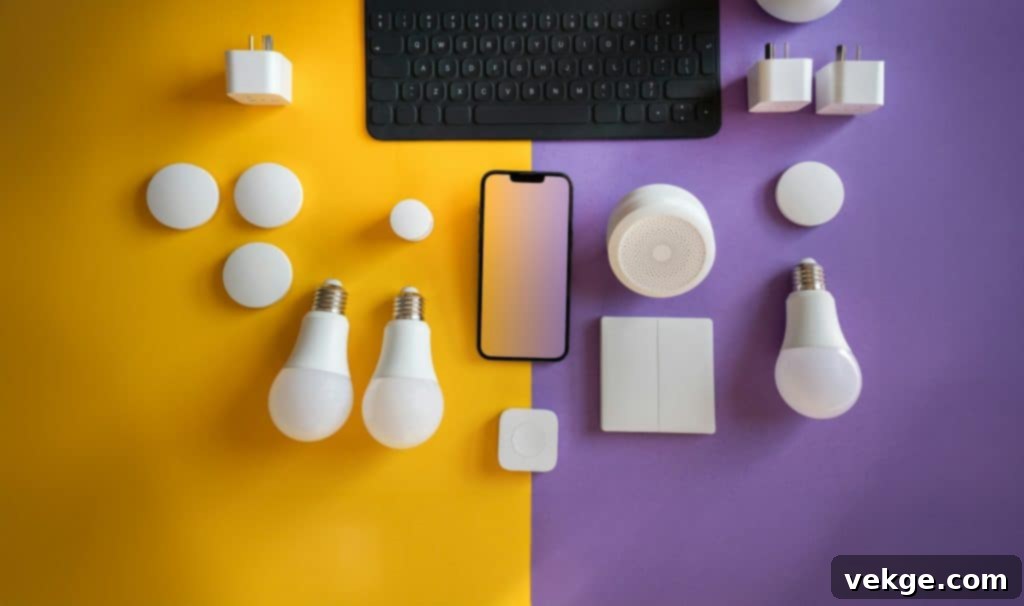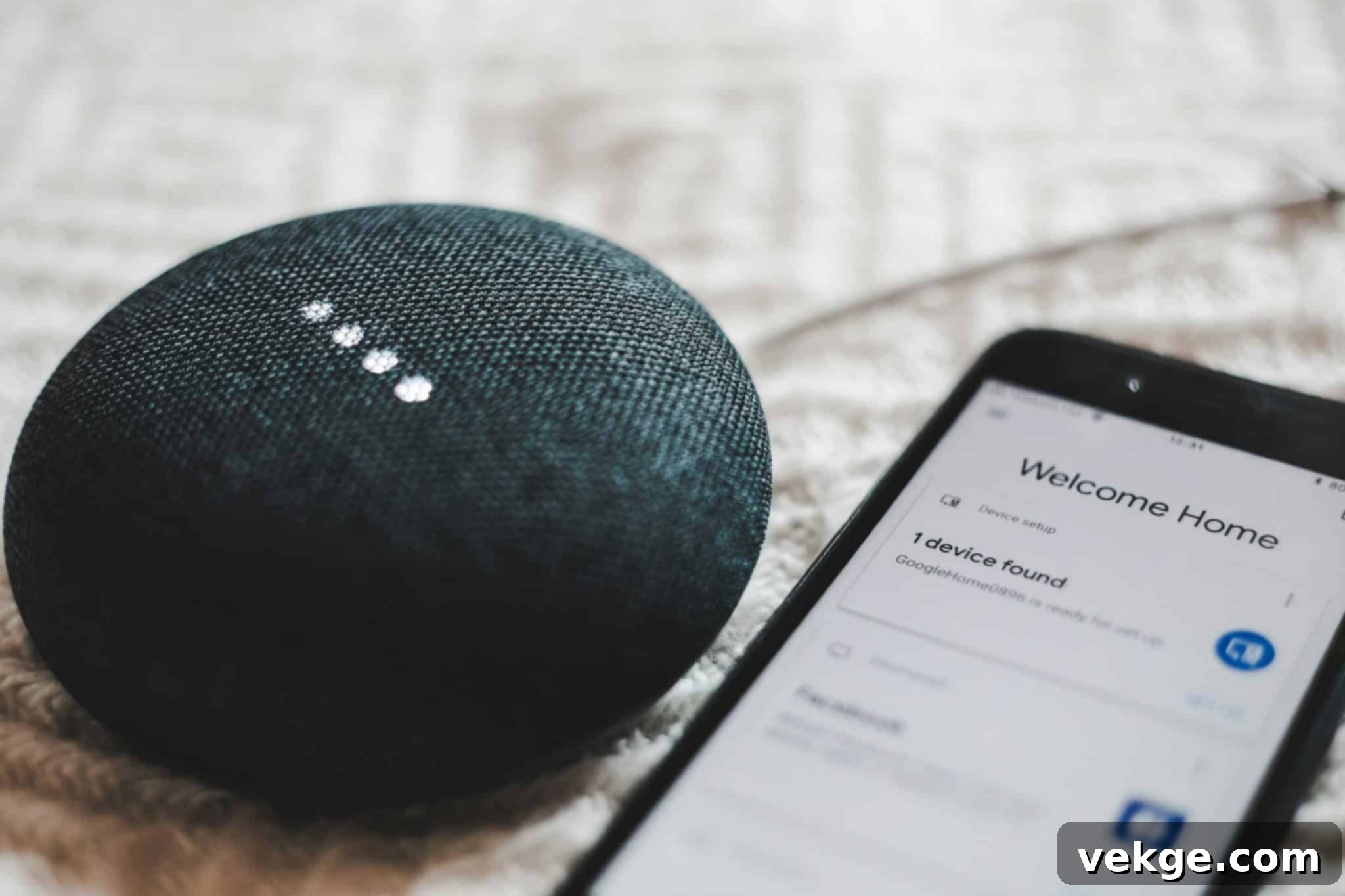Smart Home Revolution: Unveiling 2024’s Most Impactful Innovations
The landscape of smart homes is continuously evolving, transforming how we interact with our living spaces. What once felt like futuristic concepts are now integral components of modern living, offering unparalleled convenience, efficiency, and comfort. Each year brings a fresh wave of innovation, pushing the boundaries of what’s possible and making our homes more intuitive and responsive. 2024 has proven to be a particularly dynamic year, witnessing groundbreaking advancements that are set to redefine the smart home experience. From enhanced entertainment hubs powered by artificial intelligence to proactive home automation systems and integrated security solutions, the smart home market is flourishing with exciting new possibilities. Let’s delve into three of the most significant innovations that have emerged this year, showcasing the future of connected living.
Google TV Streamer Elevates Entertainment with Gemini AI
September 2024 marked a pivotal moment for digital entertainment within the smart home ecosystem with the launch of the Google TV Streamer box. This innovative device goes beyond the capabilities of a traditional media player, solidifying the smart TV’s role as the central nervous system of a modern connected home. Functioning similarly to a Chromecast, the Streamer provides seamless access to Google TV’s expansive streaming service, offering a vast library of movies, TV shows, and comprehensive YouTube functionality. However, the Google TV Streamer distinguishes itself through two crucial enhancements: integrated Gemini AI and a remarkable four times the storage capacity of its predecessor, the Chromecast.
Google’s strategic decision to embed Gemini AI transforms the user experience. This intelligent integration allows for highly personalized content recommendations, learning from your viewing habits to suggest your next favorite film or series with impressive accuracy. The added storage ensures smoother operation and greater flexibility for app installations and content caching. Understanding that smart TVs are becoming the focal point for digital interaction, Google has equipped users with a more powerful and intelligent device, perfectly suited to support diverse entertainment preferences and digital lifestyles. Furthermore, the Streamer box boasts robust Google search functionality, empowering users to discover and access a wealth of online content beyond pre-curated streaming services.
This means smart homeowners can effortlessly navigate online platforms and services directly through their television or other connected devices. The possibilities are vast, ranging from exploring other video-sharing websites and browsing retail platforms to engaging with interactive activity sites, such as iGaming. For instance, users can leverage the internet search capabilities to find popular Paddy Power Games online casino games, including a variety of slots, captivating spinning wheel games, classic table games, and even streamed game shows offering an interactive twist. With the Streamer’s comprehensive search function, the breadth of entertainment and information discoverable and castable to other devices within your home is virtually limitless.
At its launch, the Google TV Streamer boasted an impressive catalog of over 700,000 movies and shows, thanks to strategic collaborations with major platforms like YouTube TV and Netflix. The influence of Gemini AI cannot be overstated; it fundamentally enhances the device’s intelligence, making content curation and suggestions more sophisticated and tailored to individual tastes. This move by Google underscores a broader corporate strategy: the seamless integration of AI across every facet of its ecosystem. Earlier in the year, Google’s blog highlighted how Gemini was already set to elevate smart home devices in the summer, prior to the Streamer box’s highly anticipated release, signaling a future where every connected device is imbued with a higher level of intelligence.
LG’s ThinQ ON Introduces its Visionary AI Agent for the “Zero Labor Home”
While Google diligently refines its own smart home ecosystem, LG has been making significant strides with its innovative approach, culminating in the introduction of the ThinQ ON. This new smart home hub represents LG’s ambitious vision for a truly interconnected and effortless living environment. The ThinQ ON stands out for its advanced capability to integrate a wider array of platforms and various household appliances into the cohesive LG ecosystem. LG has clearly absorbed a crucial lesson learned by pioneers like Matter and other standardization initiatives years ago: interoperability is not just a feature, but the very foundation upon which the future of the smart home will be built.
More than just a smart speaker, the ThinQ ON is a compact powerhouse designed for comprehensive home automation. It skillfully combines intuitive voice control with cutting-edge generative AI integration and support for multiple communication protocols. Within its sleek package, it incorporates industry standards such as Matter and Thread, alongside Zigbee wireless meshing, which are all vital technologies poised to significantly enhance and support complex home automation scenarios in the coming years. This multi-protocol approach ensures that the ThinQ ON can communicate effectively with a vast range of smart devices, regardless of manufacturer, paving the way for a more unified and less fragmented smart home experience.
At the heart of LG’s smart home intelligence is its charismatic assistant, known simply as the AI Agent. This intelligent entity embodies LG’s ambitious long-term goal of creating the “Zero Labor Home.” While a captivating, two-legged AI Agent droid was unveiled at CES 2024 as a conceptual representation of this vision, the actual ThinQ ON package integrates the advanced processing power and learning capabilities of this AI Agent. The intelligence of this AI is what truly powers the speaker, enabling it to proactively assist in automating your daily life without constant manual input.
Imagine a smart home that truly understands and anticipates your needs. For instance, instead of habitually tapping on your phone to activate your smart thermostat at a specific time each day, the AI Agent embedded within the ThinQ ON is designed to learn from your recurring behaviors and preferences. Over time, it will independently adjust the thermostat settings, ensuring optimal comfort without requiring any explicit command or interaction from you. This level of proactive automation and intelligent learning moves beyond simple voice commands, transforming the smart home into a truly intuitive and responsive living space that genuinely supports the “Zero Labor Home” philosophy.
Philips Hue Enters Home Security with Integrated Smart Solutions
For discerning smart home enthusiasts, the name Philips Hue has long been synonymous with sophisticated and customizable smart lighting. Their extensive selection of lamps, versatile light strips, and intelligent bulbs all seamlessly operate through the Hue Bridge, which itself utilizes robust Zigbee networking to link and synchronize room lighting across the home. This established ecosystem allows users to effortlessly control their lighting through a dedicated app, voice commands, or automated settings based on schedules or sensor triggers. Building upon this foundation of precise control, advanced sensing, and rigid adherence to user commands, it is a logical and exciting progression for Philips Hue to expand its expertise into the critical domain of home security technology.

Philips Hue’s entry into the security market began with the introduction of their secure contact sensor. This discreet, wireless white plastic slice is ingeniously designed to be connected to any existing Hue light and can be easily mounted on virtually any door, window, or entryway within your home. Once installed, it promptly notifies you whenever a perimeter is breached or movement is detected, instantly enhancing your home’s awareness. This initial offering laid the groundwork for a more comprehensive security suite, which now includes multiple cameras, notably a joint floodlight camera. This innovative device combines powerful outdoor illumination with vigilant surveillance, offering both deterrence and monitoring capabilities.
The true strength of Philips Hue’s security line lies in its seamless integration with its renowned smart lighting ecosystem. Imagine a scenario where a contact sensor on your backdoor detects an unauthorized entry: not only would you receive an immediate alert on your phone, but your connected Hue lights could also automatically flash red, illuminating specific areas or even simulating occupancy to deter potential intruders. This synergistic approach transforms your smart lighting from a mere aesthetic feature into an active component of your home’s defense system, providing an added layer of peace of mind. The ability to combine lighting, sensors, and cameras under one cohesive platform makes Philips Hue a formidable new player in the smart home security landscape, offering integrated solutions that are both intelligent and highly responsive.
The innovations brought forth by Google, LG, and Philips Hue in 2024 paint a vivid picture of the accelerating evolution within the smart home industry. These developments underscore a clear trend towards greater intelligence through AI, enhanced interoperability across diverse devices, and more holistic solutions that integrate various aspects of home management, from entertainment to security. As we approach 2025, we can anticipate an even greater influx of groundbreaking technologies and refined user experiences, further cementing the smart home’s role in our daily lives. The future of smart living promises unprecedented levels of convenience, efficiency, and peace of mind, continuously adapting to make our homes more intuitive, responsive, and ultimately, more livable.
